Key takeaways:
- Encouraging trust and open communication within engineering technology teams fosters innovation and enhances collaboration.
- Balancing technical expertise with emotional intelligence, such as empathy and active listening, boosts team performance and creativity.
- Defining clear roles and responsibilities helps streamline workflows and prevent misunderstandings during projects.
- Celebrating small victories and promoting adaptability are crucial for building strong team dynamics and achieving collective success.
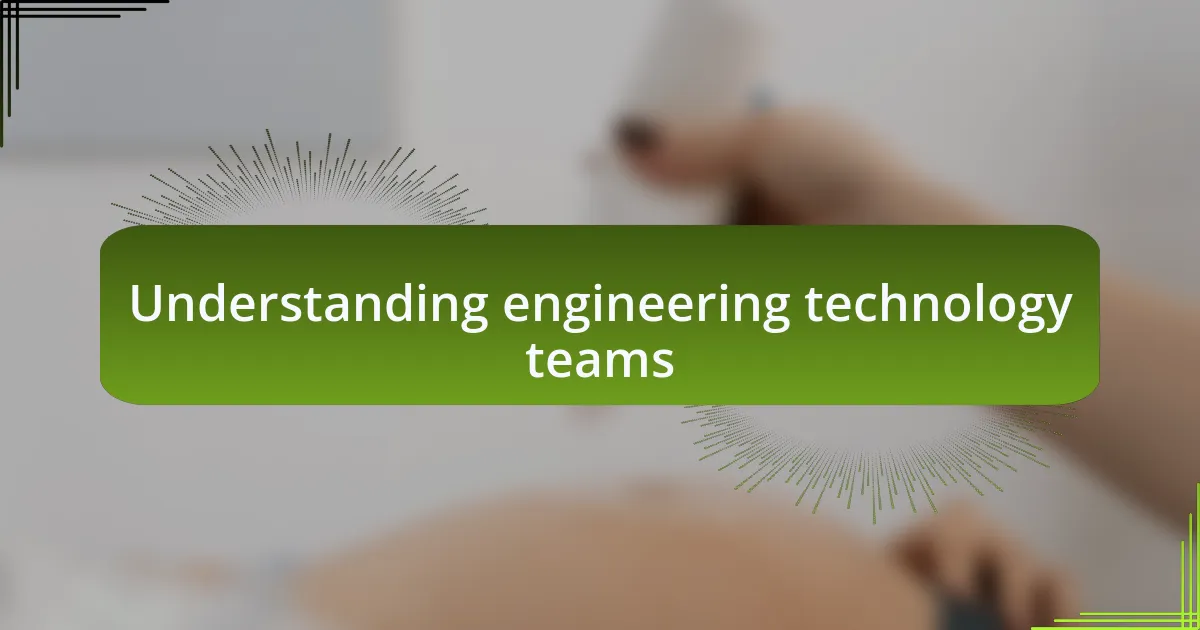
Understanding engineering technology teams
Engineering technology teams are often a blend of diverse skills and perspectives, which can become a powerful engine for innovation. I remember a time when I brought together engineers, programmers, and designers to tackle a complex project. Initially, there were communication challenges, but as we learned to appreciate each other’s strengths, the synergy became palpable.
Every team has its own unique dynamics influenced by individual personalities and experiences. I often found that encouraging team members to share their background stories not only fostered trust but also sparked creative problem-solving. Have you ever noticed how a simple conversation about personal interests can lead to a breakthrough in collaboration? That’s the beauty of understanding the human element within engineering technology teams.
Moreover, the balance between technical expertise and interpersonal skills cannot be overstated. While technical prowess is essential, I’ve seen firsthand how emotional intelligence—like empathy and active listening—can enhance team performance substantially. Reflecting on my experiences, I realize that the best teams are those that embrace both the hard and soft skills, creating an environment where everyone feels valued and inspired to contribute.
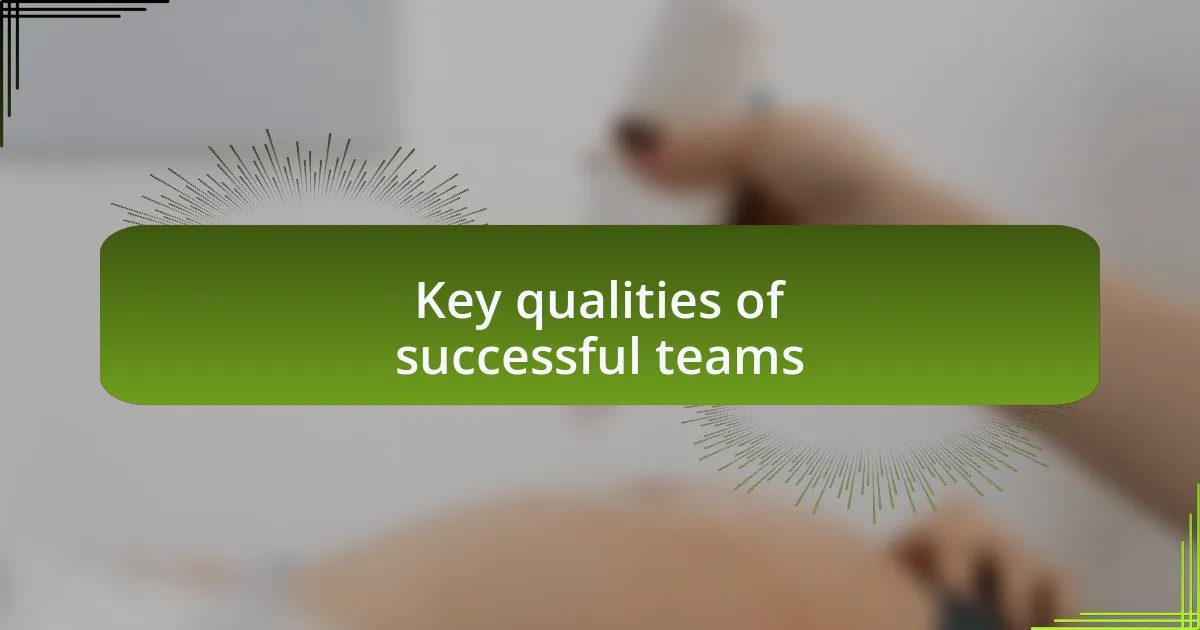
Key qualities of successful teams
One key quality of successful teams is trust. From my experience, a team that trusts each other is more open to sharing ideas and taking risks. I once had a project where team members were hesitant to voice their thoughts, fearing judgment. By nurturing a culture of trust, where everyone felt safe to express themselves, we ultimately unlocked innovative solutions that we hadn’t considered before.
Another critical quality is adaptability. I vividly remember an instance when one of our engineers had to pivot mid-project due to unexpected challenges. Instead of panicking, our team rallied together, brainstorming and adjusting our approach. This adaptability not only saved the project but also reinforced our resilience as a team. How often do you see a team thrive in the face of change? It truly comes down to how well they adapt together.
Effective communication is also vital. It’s amazing how clear communication can streamline workflows and prevent misunderstandings. I recall a situation where a miscommunication nearly derailed a deadline. Once we implemented short daily check-ins, it transformed our communication and kept everyone aligned. Isn’t it fascinating how the simplest change can lead to extraordinary improvements? In my experience, fostering an environment where open dialogue is encouraged can be the difference between a good team and a great one.
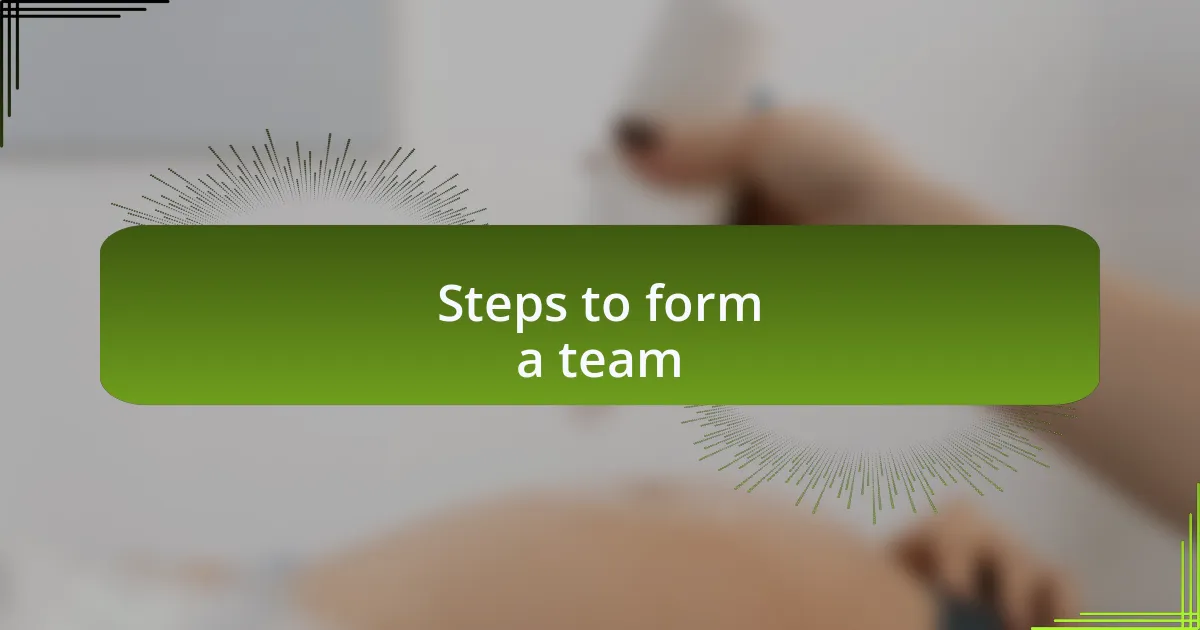
Steps to form a team
When forming a team, the first step is identifying the right people for the task. I remember when I had to assemble a group for a critical project; I focused on skill sets, personality types, and cultural fit. Isn’t it interesting how the dynamics of a team can change just by selecting members who complement each other?
Once the team is formed, establishing clear roles and responsibilities is paramount. This clarity can prevent overlaps and confusion down the line. In one instance, I assigned each member specific tasks based on their strengths, which led us to seamlessly navigate through challenges. How often have you witnessed a project falter simply because no one knew who was responsible for what?
Finally, cultivating a strong team culture sets the foundation for long-term success. From my experiences, initiating team-building activities early fosters camaraderie and boosts morale. I recall a simple icebreaker exercise that not only broke the tension but also highlighted shared interests among team members. Doesn’t it make you think about how a little effort in team bonding can lead to incredible collaboration?
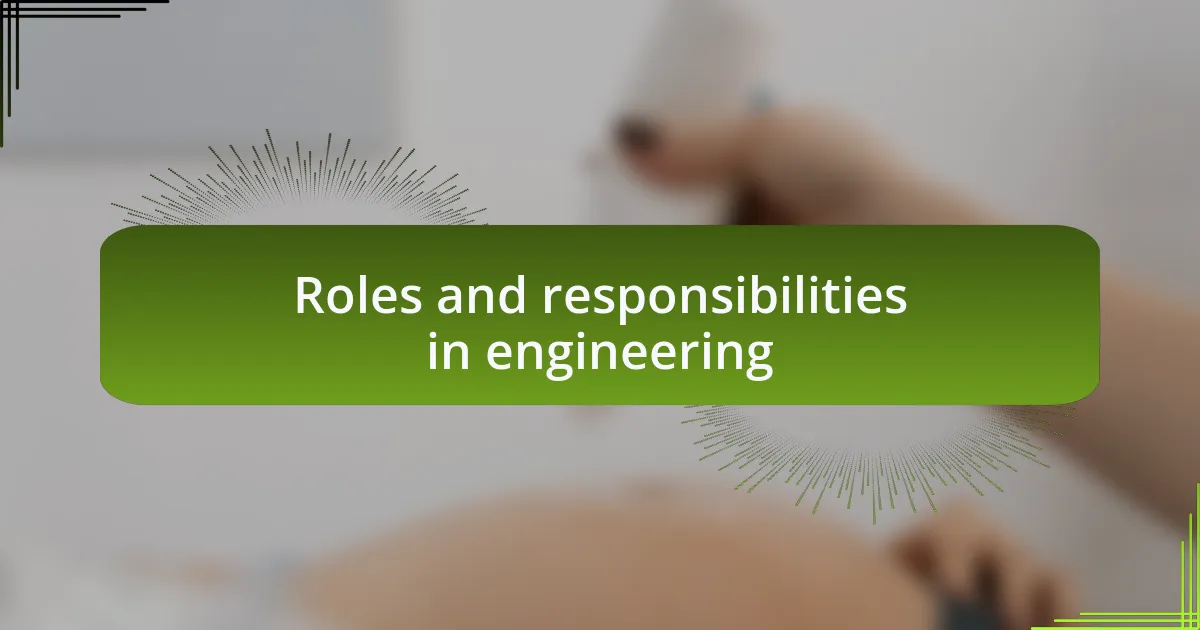
Roles and responsibilities in engineering
In engineering, defining roles and responsibilities is not just an organizational task—it shapes the entire project’s trajectory. I recall leading a project where I designated a lead engineer, a systems analyst, and a quality assurance specialist, each playing a pivotal role in ensuring that every aspect of our work aligned seamlessly. Have you ever considered how crucial it is for each team member to own their piece of the puzzle?
Effective collaboration hinges on understanding each member’s responsibilities. I remember a time when a design engineer and a project manager had misaligned expectations, which sparked tension and stalled progress. Recognizing this, we held a quick alignment meeting that transformed the communication between them. Isn’t it fascinating how a simple conversation can clarify roles and beckon the team toward a common goal?
Moreover, regularly revisiting and refining these roles can be just as important as establishing them in the first place. During a particularly ambitious project, we found ourselves adapting roles to meet evolving challenges. I learned firsthand that flexibility in roles not only enhances productivity but also keeps motivation high. Have you experienced how adaptability within your team can be a game-changer in overcoming obstacles?
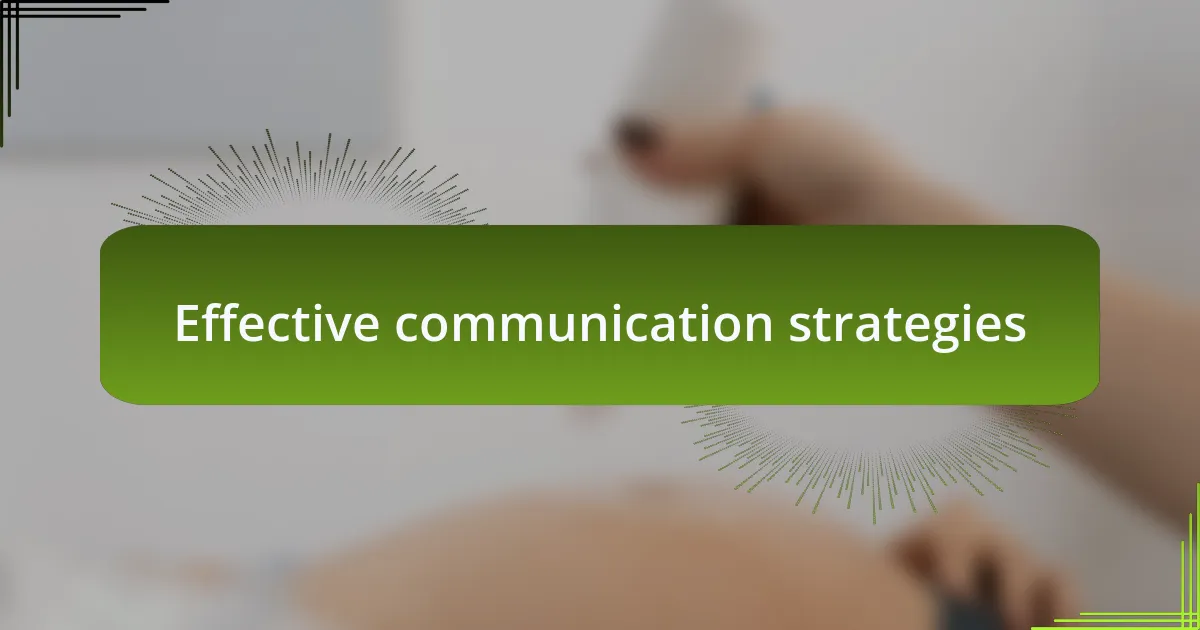
Effective communication strategies
Effective communication is the heartbeat of any successful team I’ve been part of. There was a moment in a past project when I introduced daily stand-up meetings. This quick check-in allowed everyone to share progress and raise concerns, fostering a culture of openness. Isn’t it remarkable how just 15 minutes a day can keep everyone on the same page?
I’ve also learned the power of active listening—an often-overlooked component of effective communication. I vividly recall a situation where a junior engineer had a brilliant idea for improving our workflow. By making it a priority to listen actively and encourage all voices, we ended up implementing changes that saved us weeks of work. Have you ever noticed how inclusivity sparks innovation?
Lastly, utilizing collaborative tools can enhance transparency and facilitate dialogue. One of my favorites is a shared project management platform that allowed all team members to see updates in real-time. It minimized misunderstandings and built a sense of camaraderie. Do you have a preferred tool that enhances communication in your projects?

My experience in team building
Building a successful team is as much about relationships as it is about skills. I remember the first time I brought together a diverse group of engineers for a major project. Initially, they were hesitant to collaborate. However, I saw it as an opportunity to encourage them to share their varied perspectives. It was inspiring to witness how, over time, they formed a strong bond, which ultimately led to groundbreaking solutions we had never imagined.
I also believe in leading by example when it comes to team dynamics. During a particularly challenging phase of a project, I shared my own struggles and vulnerabilities with the team. This openness sparked a wave of honesty among us, transforming our environment into one where support felt natural. Have you ever experienced a moment when vulnerability led to greater strength within a team?
Moreover, I value celebrating small victories. After completing each milestone, I organized informal team gatherings to acknowledge our progress. One memorable celebration involved a simple potluck, which not only rewarded our hard work but also reinforced our collective identity. I often wonder, how often do we take time to appreciate our achievements and strengthen our connections?

Lessons learned from my journey
Sometimes, I learned that communication is truly the backbone of any successful team. In one project, I noticed that a lack of clarity was causing frustration and inefficiency. By implementing regular check-ins, we created an open forum for sharing ideas and concerns. Suddenly, everyone felt more engaged. Have you ever thought about how a 15-minute chat can clear the air and enhance productivity significantly?
Another important lesson was the necessity of trust. Early on, I had a team member who excelled in technical skills but struggled with confidence. I made it a priority to recognize their contributions publicly, which not only boosted their confidence but also inspired others to value their input. That experience taught me that building each other up creates a culture where everyone is willing to take risks and innovate. What small actions have you seen that changed the dynamics of a team?
Lastly, I discovered the significance of adaptability. I remember a time when we faced unexpected setbacks due to changes in project requirements. Instead of panicking, we shifted our approach together. This flexibility brought us closer, enhancing our collective problem-solving abilities. Reflecting on that experience, I realized that staying adaptable can actually lead to creative breakthroughs. How do you handle change within your own teams?